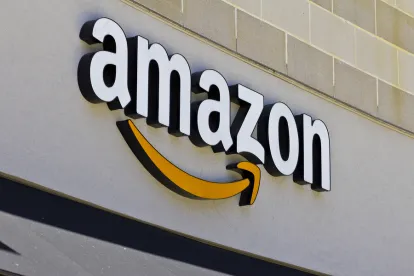Amazon’s recent stunning and outrageous decision to fire an employee who protested unsafe conditions at a Staten Island warehouse highlights many facets of the risks to workers who step up to try and force their employers to protect them during the COVID-19 pandemic. The company’s actions also demonstrate the dangers to employers of forgetting that anti-discrimination and retaliation protections apply even during a time of national crisis.
Christopher Smalls was concerned when he observed that one of his coworkers on the warehouse floor was visibly ill, and he urged her to go home. He then told management they should shut down the warehouse for two weeks because it was impossible to know how many people had been near the sick employee over the days when she might have been infected. Although his suggestion was entirely reasonable, Amazon ignored it. Instead, on March 28, Amazon ordered Mr. Smalls to self-quarantine but took no steps to assure the safety of all other employees who might have been in contact with the sick employee. On Monday, March 30, Mr. Smalls joined a group of his fellow warehouse workers in a protest outside the building. He wore a mask and carried a sign proclaiming “Our health is just as essential.” Amazon fired him that day. Amazon claims it fired Mr. Small for violating the directive that he remain in quarantine.
A number of political leaders have expressed outrage at this obviously retaliatory decision, and New York State Attorney General Letitia James on Monday condemned Amazon's dismissal of Mr. Smalls, and asked the National Labor Relations Board (NLRB) to investigate the incident. Mr. Smalls might also consider filing a complaint of retaliatory discharge with the Occupational Health and Safety Administration (OSHA), because he was fired immediately after raising legitimate safety concerns with management internally and through the protest outside the workplace.
In an effort to deal with the negative public relations aspect of this unfortunate decision, Amazon compounded the already ugly dimensions of its decision by internally sharing ideas about ways to portray Mr. Smalls in a negative light, using language with frankly racist overtones, suggesting he is not “smart” or “articulate.” While agencies and possibly the courts will sort out whether Amazon’s termination of Mr. Smalls was justified, the situation as described presents a number of object lessons for all employers and employees alike.
Anti-discrimination Laws and Whistleblower Protections During a Pandemic
First, everyone should remember that all anti-discrimination laws and whistleblower protections remain in full force during the pandemic. The special economic protections for workers displaced by employers who need to shut down or furlough staff do not undermine the bedrock principle that employers must not discriminate on invidious grounds when deciding who will stay and who will go, or who can telework and who cannot, or who should self-quarantine and who should not. Thus such decisions must be made without regard to race, sex, national origin, religion, age, or disability.
Second, although employers always contend they have legitimate reasons for taking adverse actions against employees, the Amazon case highlights that suspicious timing will often be sufficient for an employee to prevail on a retaliation claim. Whether framed as retaliation for protected concerted action under the National Labor Relations Act (NLRA) or a protected complaint about workplace safety under OSHA, the decision to fire Mr. Smalls cannot be separated from his protected conduct. Saying it fired Mr. Smalls for violating a quarantine directive by coming to the worksite rings hollow when the reason he came to the site was not to work in proximity with other employees, but to protest the safety measures Amazon had taken that he thought were inadequate.
Third, employers cannot deflect retaliation claims by saying the employee was mistaken or misguided in raising the concerns he did. Although Mr. Smalls’ underlying concerns may have been misplaced, his right to raise those concerns was protected conduct, and punishing him for that conduct is illegal even if Amazon’s safety measures are determined to have been completely reasonable.
Fourth, when an employer claims it legitimately fired an employee for violating a rule or order, it will have to show that its punishment of all rule breakers is consistent and uniform. Singling Mr. Smalls out for quarantine when untold numbers of employees were exposed to the same possibility of infection was not even-handed. Firing him for being involved in a protest seems on its face to have been an effort to stamp out potential labor organizing efforts rather than a measured response to an employee’s violation of a self-quarantine directive.
Hopefully all employers will learn from Amazon’s mistake that they should encourage employees to raise concerns about health and safety, not punish them for their heroic efforts to keep their fellow workers and communities safe. Employees who think their employers have violated their rights should seek prompt legal advice.



 />i
/>i

